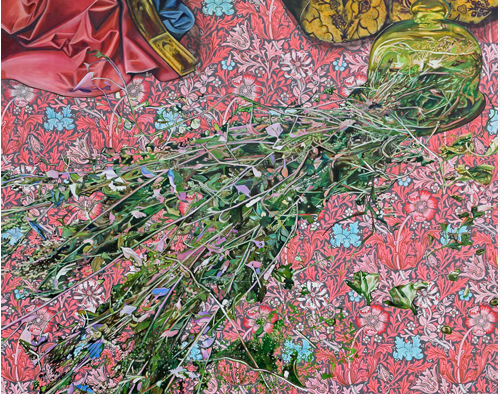
Grotesque Nature
This is artist Melissa Furness and this area of the exhibition is what I call Grotesque Nature. So these works explore narratives of struggle through the concept of weeds; plants that are not valued, where they are growing, and those that tend to overgrow or choke. So I began to creating this work during the pandemic when I was confronted, like a lot of people, with my own self and spent many hours outside battling with the yard.
So I began to think about weeds that I pulled as, like, certain unhealthy habits that a person might have that they wish to rid themselves of. So we work hard to try to do the right thing, but somehow the habit sneaks back in and then we have to work again in order to maintain and control it. So there are certainly weeds that we should obviously completely eliminate, but there are others that are beautiful in their way and are part of who we are, but that just need to be reigned in unless they take over our lives. So there are things that grow and thrive against our will. And so we do this kind of internal and external rooting out with an eventual return that becomes something like a cycle of time and of oneself.
So within these weeds, you'll see these grotesque fairy like figures that play out across these sort of dense thickets to suggest narratives that question personal moments. And you know how we define many aspects of ourselves, our gender, our identity, certain animalistic behaviors, sexuality. So the resulting space is one that is fantastical and surreal and the inspiration for these small figures comes from my travels to Italy, where I visited a place called the Domas Ore in Rome, which is Latin for Golden House. So this was a vast landscaped complex that was built by Emperor Niro in the heart of the ancient city, and was a symbol of opulence, which later became an embarrassment to Nero successors, so the palace was filled in with Earth then and built over only to be rediscovered later when a young Roman accidentally fell through a hole in the hillside at the end of the 15th century and found himself in a grotto filled with these painted figures. So the Renaissance artists were soon, you know, interested and found inspiration in the painted figures that they saw.
So with my work, you know, you see a translation from, you know, these ancient images to the Renaissance appropriations of them, and now to my own works that transform and place these figures into a new context today.